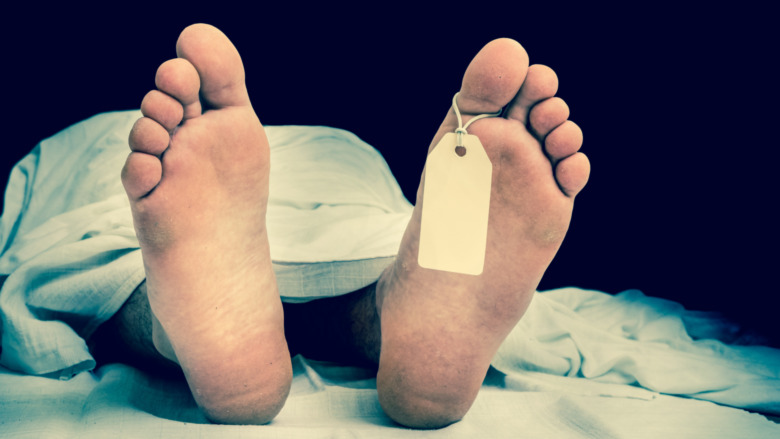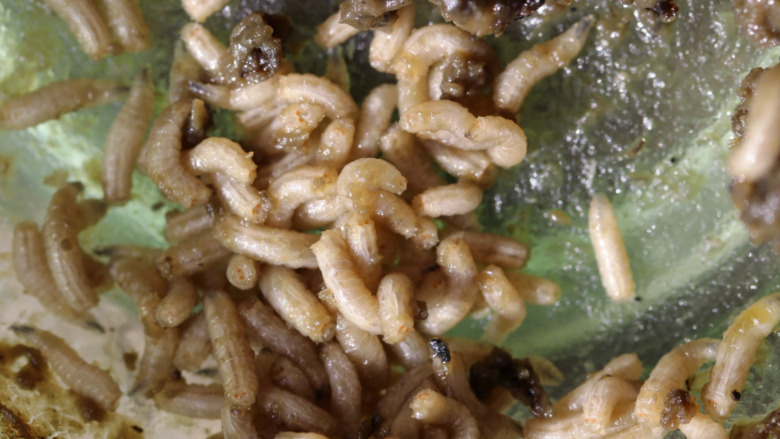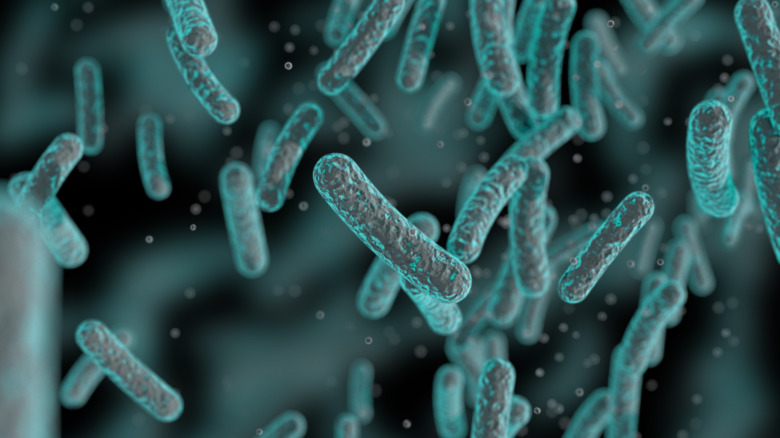Here's How Your Body Could Get Eaten After You Die
Since the dawn of humanity, we've learned through centuries of research how different accounts and studies explained death over the years. And thanks to modern science, today we can know all there is when death happens.
When life leaves the human body, there are so many possible things that happen to the corpse. Everything from how our body's most vital organs react to no life, and the eerie things that can and will happen to our body after autopsy, embalming, and funeral procedures are complete. It's obviously more than likely that the very first human experience with death led several people to actually see up close what happens to a dead body. Nowadays, most people are not privy to the decomposition process. But pop culture brought some of those details to human consciousness. For example, horror films gave a lot of viewers their first introduction to maggots and why they find themselves on the human body after death. Even though movies are known for their dramatization, there is an actual reason for them to appear. Insects aren't just pesky things that bother us in life, they come after in death, too.
The human body gets eaten by insects
There are insects that feast on the living, and others that feast on the dead. The latter comes in several waves, according to National Geographic. In the beginning stages of a decomposing body, first come maggots and baby green bottle flies. These two insects, in particular, prefer fresher (and fleshier) corpses and will eat the body tissue that still has moisture.
However, once the moisture leaves the corpse, so do they. What comes next are the adult green bottle flies. Not only do they feed on the corpse, but they also lay eggs inside it as well. They consume liquid the body has naturally secreted and then eat the skin. Once they are done contaminating it, several other species of flies enter the scene (or coffin). Blow flies and coffin flies usually tend to follow. But this group usually gives birth instead of egg-laying, says Australian Museum. The new bug life they create leaves food for other bugs.
Afterward, beetles descend on the remains, and they are the final group of insects feasting on what would now be considered a dried-out body. They enter the scene much later because they can break down and chew the tougher and drier skin that makes up the decaying corpse.
The body also gets eaten by microorganisms
But that is not all. Microorganisms that can't even be seen with the plain human eye are also having a feast on dead bodies. They are called necrobiome — microbes that will only appear when there is a decomposing body nearby. These microbes tend to show up during a certain stage of decomposition, which also helps forensic scientists learn about a body's time of death. This especially comes in handy in the cases of homicide or when a corpse is discovered outdoors.
A whole new ecosystem is created when these microbes detect decomposing bodies on earth's soil, per The Atlantic. It can either be cold or hot, dry or wet, and whether it's a human or animal, scientists discovered that a rotting body will inevitably attract a group of microbes that further decompose (and eat) the body. They will appear at some point during decomposition.


